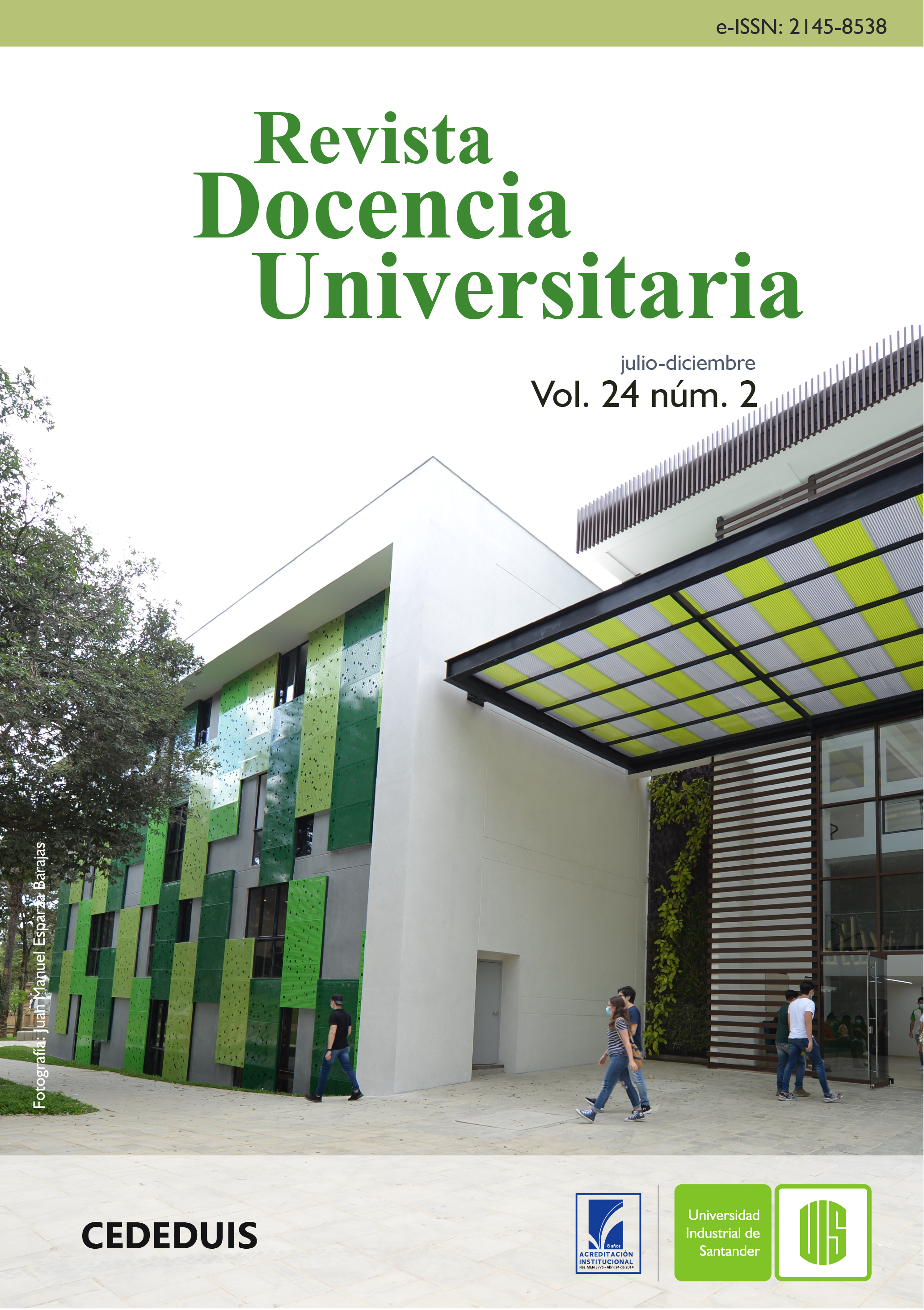Published 2023-07-31
Keywords
- problem solving,
- pedagogical strategy,
- technological devices,
- mobile application,
- chemical reactions
- balancing chemical equations ...More
How to Cite
Copyright (c) 2023 Revista Docencia Universitaria

This work is licensed under a Creative Commons Attribution 4.0 International License.
Abstract
Based on the results of the Saber Valle 2021 tests, applied to the tenth grade students of the Jorge Eliécer Gaitán Educational Institution (IEJEG) of the Municipality of Restrepo, Valle del Cauca, in the area of chemistry it is identified that the competence: resolution of problems in balancing chemical equations presents a low performance. For this reason, it seeks to develop a strategy that allows students to achieve a better performance in this competition. To address this situation, a descriptive investigation is used that consists of analyzing and carefully observing the study group in order to record their behavior in relation to the stated objective. The purpose is to obtain data that can be organized and quantified, in order to overcome the identified difficulty. This research approach is based on the quantitative analysis of the tests applied and the results obtained. A descriptive approach is used with a mixed method that includes direct observation, initial and final testing of the process. The main objective of this proposal is to contribute to improve the learning process through the use of MIT INVENTOR 2, an easily accessible and free application that does not require sophisticated programs in its design. As a result, the Lin_Poll application is created, which allows to achieve the general objective of the investigation. The development of this pedagogical proposal, based on the use of ICT, promotes the learning of problem solving competence in chemical equations. By using the Lin_Poll mobile application, significant learning is achieved, as evidenced by the positive results obtained in the final test, with an average of 74.80%. This generates a greater motivation on the part of the students towards learning, promoting a positive change in the educational process.
Downloads
References
- Cobacho, J., Fernández, M., y Ballesta, J. (2016). La enseñanza de la Quíimica en Bachillerato: directrices y actuaciones prácticas. Un destello de luz en el camino competencial. Juana-Revista, 6(2). http://www.aires.education/wp-content/uploads/2016/07/Juana-revista_4.pdf
- Hernández-Sampieri, R. y Mendoza Torres, C. (2018b). Metodología de la Investigación (Vol. 4). McGraw-Hill Interamericana.
- Hernández, S. R., y Mendoza Torres, C. (2018b). Metodología de la investigación. Las rutas cuantitativa, cualitativa y mixta. Revista Universitaria Digital de Ciencias Sociales, 9(18).
- Juarlaritza, E. (2018). The Diagnostic Evaluation in EUSKADI Proposal for its development and application. http://ediagnostikoak.net/edweb/cas/materiales-informativos/marco_evaluacion_diagnostica.pdf
- Marzoa, J. (2016). Efecto de un entorno virtual sobre el rendimiento escolar en un curso de Química en el CETMAR. Razón y palabra, 20(93), 600-608. http:/www.revistarazonypalabra.otg.
- Meroni, G., Capello, M., & Paredes, J. (2015). Enseñar Química en contexto.Una dimensión de la innovación didáctica en educación secundaria. Educación Química, 26(4), 275-280.
- Naranjo, S., y Patiño, L. (2021). Fortalecimiento de la competencia de resolución de problemas en balanceo de ecuaciones químicas a través de aplicativos móviles con los estudiantes de grado 10. [Trabajo de maestría no publicada.] Universidad de Santader, UDES.
- Pardo, H. (2021). Test de Evaluación de Aprendizaje. Saber Vallle.

